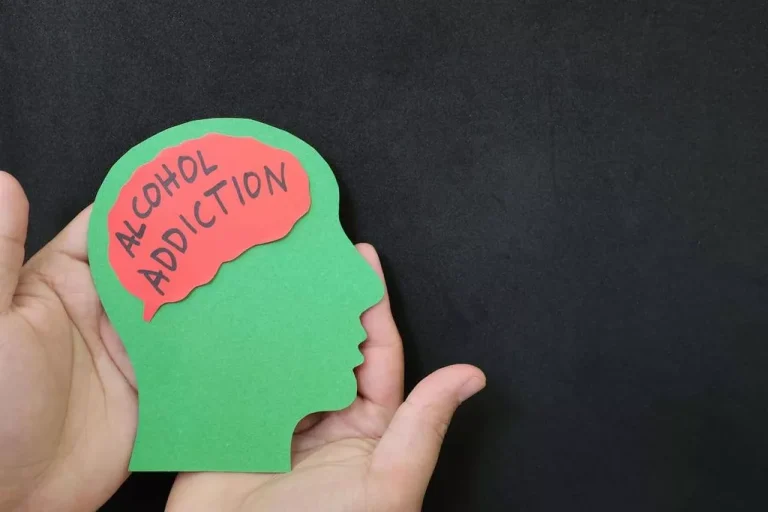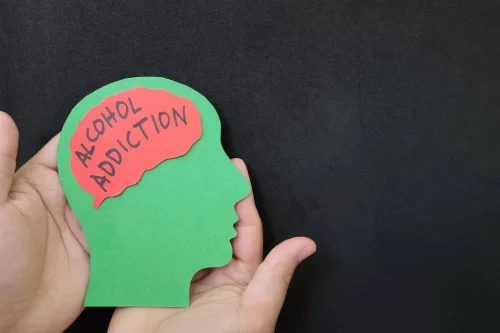
Thereis an extensive literature that documents which adolescents have thebest prognosis for success in treatment. Factors that predictsuccess include having a higher teenage alcoholism socioeconomic status, attendingschool or other educational programs, and being older when substanceuse began. For example,girls often initiate alcohol or drug use in dating or in conjunctionwith their first sexual experience.

Comprehensive, Integrated Treatment Approach

Expressing oneself in front of others helps to boost confidence, which makes it easier for that teen to move forward in recovery. New research links teen cannabis use to long term sensitivity to stimulants. Early intervention can make a significant difference in the trajectory of a teen’s life. Alcohol is often glamorized in movies, TV shows, and advertising, portraying drinking as a desirable or harmless activity. Take the assessment and get matched with a professional, licensed therapist.
Behaviors and Attitude as Signs of Alcoholism
- Teens who start drinking before age 15 are nearly four times more likely to develop alcohol dependence in adulthood than those who wait until age 21.
- Group sessions are also good places to provide teens with skills that they need in order to avoid alcohol use.
- “Just assuming that people will naturally develop responsible habits when it comes to these drugs is a fairly optimistic assumption,” he says.
- For these reasons, putting girls in a coed setting fortreatment may be contraindicated.
- It can be extremely distressing as a parent to witness the after-effects of your teen’s binge drinking.
- We will help you find an adolescent alcohol treatment program that will rescue your teenager from the grip of alcoholism and help him grow up to be a healthy and successful adult.
Alcohol is the most widely used substance among America’s youth and can cause them enormous health and safety risks. The average 18 year old has seen 100,000 television commercials encouraging him or her to drink. That’s why 80% of high school seniors have tried alcohol, 32% have gotten drunk in the last thirty days, 43% smoke marijuana, and about one third are smoking cigarettes.
- According to the World Health Organization, data indicates that half of all alcohol-attributable cancers in the European region are caused by light and moderate alcohol consumption.
- When teens feel heard, they are more likely to internalize the risks of drinking and make healthier decisions moving forward.
- In addition, this approach should connect adolescents andtheir families with an array of community services.
- It’s important to remain calm when confronting your teen, and only do so when everyone is sober.
- One major sign of underage drinking that you as a parent can look for is a sudden change in peer group.
- One of Rand’s teenage patients Lela Lander runs away from home seeking help from Rand.
Prevalence of Underage Alcohol Use, People Ages 12 to 20
If you have your first drink before the age of 15 your odds of becoming addicted increase Halfway house by 40%. College drinking trends have declined gradually over the past 10 years. Teenagers turn to alcohol either as an escape route or as a means of testing their boundaries. Copyright © 2021 – 22 The-Alcoholism-Guide.org – The information provided by TheAlcoholismGuide.org is not a substitute for professional medical advice.
This psychological coping strategy involves minimizing the impact of alcohol on their lives, making it challenging for individuals to recognize the need for intervention. Open and honest communication is the cornerstone of a healthy recovery process. Families must create a safe space for teens to express their feelings, concerns, and successes. Active listening is imperative, as it builds trust and reinforces the idea that their voice matters.

This type of occasional use among teenagers can be dismissed as “growing pains,” so long as no dangerous behavior, such as operating a motor vehicle while intoxicated, accompanies their use of alcohol. While teen drinking rates are declining, it is still present and teens should be able to be prepared to navigate peer pressure and the avaability of alcohol. Statistics show that less than 10% of teens under age 14 has drunk alcohol in the past month. For teens ages 15 to 17, less than 30% has drunk alcohol in the past month. If somebody says you need to drink because “everybody” is doing it, don’t believe it.
- 10% of eighth graders report drinking at some point, and prevalence of alcohol increases with age.
- This figure is not just a number; it represents a vast group of young individuals whose futures are potentially at risk due to early alcohol exposure.
Treatment Programs Need to Be Evaluated

Underage binge drinking (defined as having five or more drinks in a row in the past two weeks) continued to its long-term decline reaching record low levels. Among 8th, 10th and 12th graders combined binge drinking declined, with only one in 20 reporting they have engaged in this level of harmful consumption. Binge drinking has declined 53 percent proportionally from 2015 to 2024 and 75 https://ecosoberhouse.com/article/alcoholic-liver-disease-symptom-and-treatment/ percent since 1991. In 2024, lifetime consumption declined in all three grade levels, reaching historic low levels. Six-seven percent of American teens have never consumed alcohol, a clear indication of success in delaying the onset of underage drinking.
